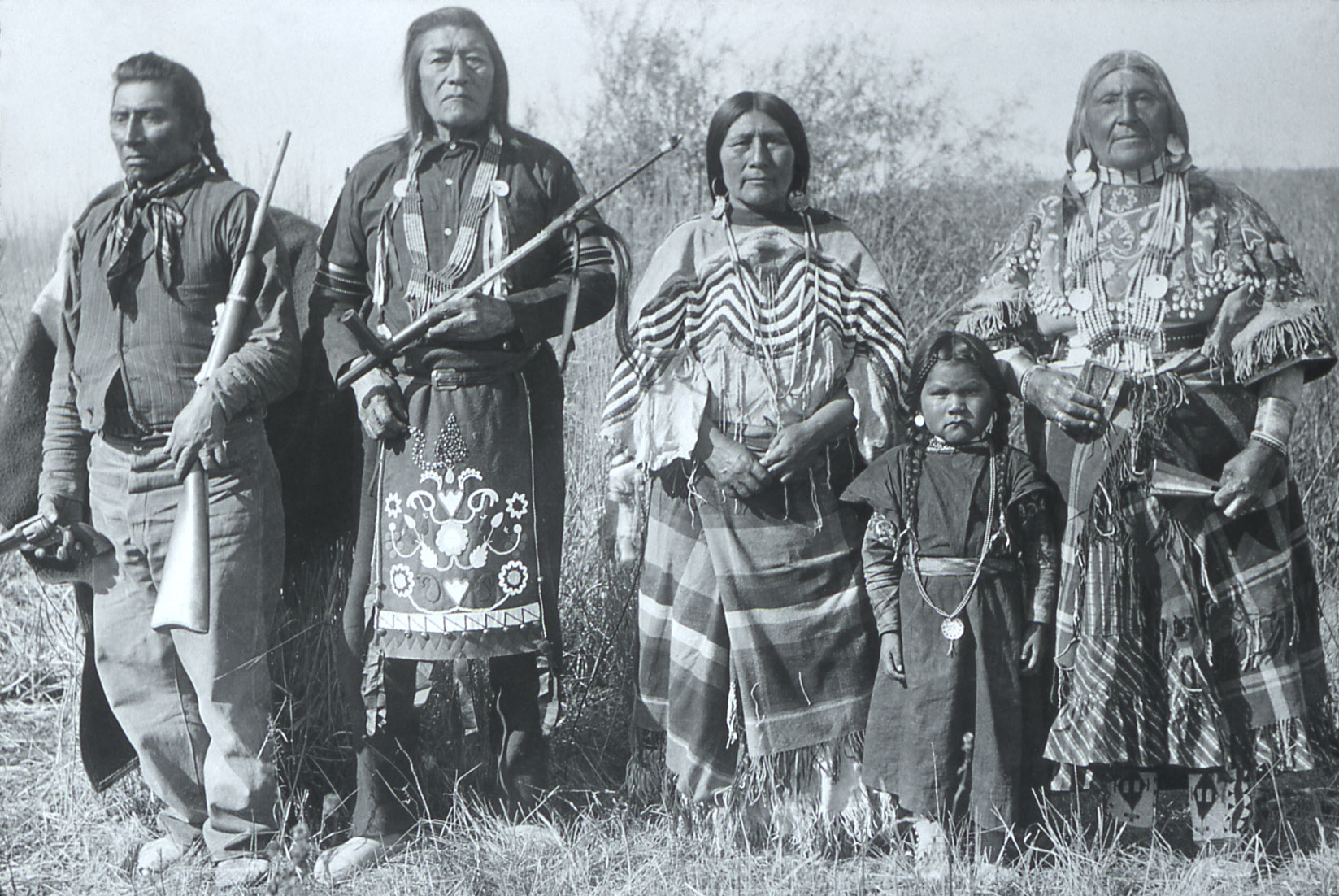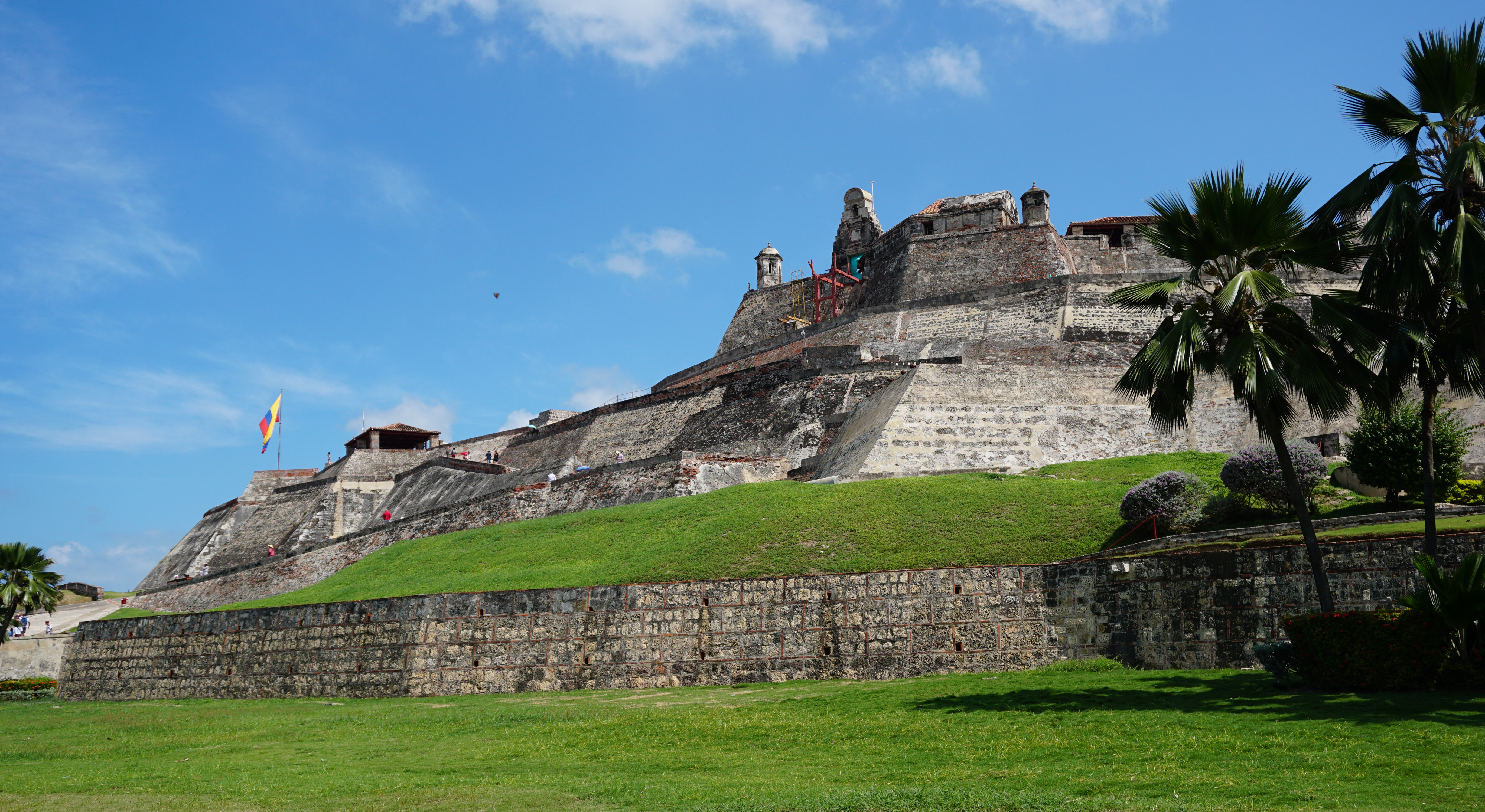|
Fort Lemhi
Fort Lemhi was a mission approximately two miles (3 km) north of present-day Tendoy, Idaho, occupied by Mormon missionaries from 1855 to 1858. Approximately twenty-seven Mormon men left the Salt Lake Valley on May 18, 1855, as instructed by Brigham Young with Thomas S. Smith serving as the leader of this group and George Washington Hill as their main Shoshonean language interpreter. The party reached the Salmon River valley (then in Oregon Territory) on May 27 and selected a permanent site for its mission on June 15, 1855. The mission was named Fort Limhi for King Limhi who was one of the kings cited in the Book of Mormon. In Mormon scripture, King Limhi organized an expedition that lasted 22 days, the same duration it required the Mormon missionaries to reach the Salmon River Country. Consequently, they named their mission after King Limhi, and Limhi eventually became "Lemhi" . The community grew to over 200 people. The settlers brought stock raising and irrigated farming to ... [...More Info...] [...Related Items...] OR: [Wikipedia] [Google] [Baidu] |
Salmon, Idaho
Salmon is a city in Lemhi County, Idaho. The population was 3,112 at the 2010 census. The city is the county seat of Lemhi County. Located in the Lemhi River valley, Salmon is home to the Sacajawea Interpretive, Cultural and Education Center, which focuses on Lemhi Shoshone culture, as well as the interaction between Sacagawea and other Shoshone and Lewis and Clark. History The Lewis and Clark Expedition crossed the Continental Divide at Lemhi Pass, to the southeast of Salmon. They followed the Salmon River through the present site of the city, then ascended the north fork of the river, at the present-day town named after the confluence, to cross into present-day Montana near Lost Trail Pass. The sole female in the party, Sacagawea, was born in the Lemhi Valley near Salmon. The Sacajawea Interpretive, Cultural and Educational Center was opened in Salmon in August 2003. From 1910 to 1939, Salmon was the western terminus of the now-defunct Gilmore and Pittsburgh Railroad. ... [...More Info...] [...Related Items...] OR: [Wikipedia] [Google] [Baidu] |
Bannocks
The Bannock tribe were originally Northern Paiute but are more culturally affiliated with the Northern Shoshone. They are in the Great Basin classification of Indigenous People. Their traditional lands include northern Nevada, southeastern Oregon, southern Idaho, and western Wyoming. Today they are enrolled in the federally recognized Shoshone-Bannock Tribes of the Fort Hall Reservation of Idaho, located on the Fort Hall Indian Reservation. History The Northern Paiute have a history of trade with surrounding tribes. In the 1700s, the bands in eastern Oregon traded with the tribes to the north, who by 1730 had acquired the horse. In the mid-18th century, some bands developed a horse culture and split off to become the Bannock tribe. The horse gave the tribe a greater range, from Oregon to northern Nevada, southern Idaho, and western Wyoming. They forayed from there on the Bannock Trail to Montana and Canada to hunt buffalo. The Bannock have traditionally made pottery, uten ... [...More Info...] [...Related Items...] OR: [Wikipedia] [Google] [Baidu] |
Properties Of Religious Function On The National Register Of Historic Places In Idaho
Property is the ownership of land, resources, improvements or other tangible objects, or intellectual property. Property may also refer to: Mathematics * Property (mathematics) Philosophy and science * Property (philosophy), in philosophy and logic, an abstraction characterizing an object *Material properties, properties by which the benefits of one material versus another can be assessed *Chemical property, a material's properties that becomes evident during a chemical reaction *Physical property, any property that is measurable whose value describes a state of a physical system *Semantic property *Thermodynamic properties, in thermodynamics and materials science, intensive and extensive physical properties of substances *Mental property, a property of the mind studied by many sciences and parasciences Computer science * Property (programming), a type of class member in object-oriented programming * .properties, a Java Properties File to store program settings as name-value p ... [...More Info...] [...Related Items...] OR: [Wikipedia] [Google] [Baidu] |
Buildings And Structures In Lemhi County, Idaho
A building, or edifice, is an enclosed structure with a roof and walls standing more or less permanently in one place, such as a house or factory (although there's also portable buildings). Buildings come in a variety of sizes, shapes, and functions, and have been adapted throughout history for a wide number of factors, from building materials available, to weather conditions, land prices, ground conditions, specific uses, prestige, and aesthetic reasons. To better understand the term ''building'' compare the list of nonbuilding structures. Buildings serve several societal needs – primarily as shelter from weather, security, living space, privacy, to store belongings, and to comfortably live and work. A building as a shelter represents a physical division of the human habitat (a place of comfort and safety) and the ''outside'' (a place that at times may be harsh and harmful). Ever since the first cave paintings, buildings have also become objects or canvasses of much artisti ... [...More Info...] [...Related Items...] OR: [Wikipedia] [Google] [Baidu] |
History Of Idaho
The history of Idaho is an examination of the human history and social activity within the state of Idaho, one of the United States of America located in the Pacific Northwest area near the west coast of the United States and Canada. Other associated areas include southern Alaska, all of British Columbia, Washington, Oregon, western Montana and northern California and Nevada. Indigenous inhabitants Humans may have been present in Idaho for 16,600 years. Recent findings in Cooper's Ferry along the Salmon River in western Idaho near the town of Cottonwood have unearthed stone tools and animal bone fragments in what may be the oldest evidence of humans in North America. Earlier excavations in 1959 at Wilson Butte Cave near Twin Falls revealed evidence of human activity, including arrowheads, that rank among the oldest dated artifacts in North America. Native American tribes predominant in the area in historic times included the Nez Perce and the Coeur d'Alene in the north; and ... [...More Info...] [...Related Items...] OR: [Wikipedia] [Google] [Baidu] |
1855 Establishments In Oregon Territory
Events January–March * January 1 – Ottawa, Ontario, is incorporated as a city. * January 5 – Ramón Castilla begins his third term as President of Peru. * January 23 ** The first bridge over the Mississippi River opens in modern-day Minneapolis, a predecessor of the Father Louis Hennepin Bridge. ** The 8.2–8.3 1855 Wairarapa earthquake, Wairarapa earthquake claims between five and nine lives near the Cook Strait area of New Zealand. * January 26 – The Point No Point Treaty is signed in the Washington Territory. * January 27 – The Panama Railway becomes the first railroad to connect the Atlantic and Pacific Oceans. * January 29 – George Hamilton-Gordon, 4th Earl of Aberdeen, Lord Aberdeen resigns as Prime Minister of the United Kingdom, over the management of the Crimean War. * February 5 – Henry John Temple, 3rd Viscount Palmerston, Lord Palmerston becomes Prime Minister of the United Kingdom. * February 11 – Kassa Hailu ... [...More Info...] [...Related Items...] OR: [Wikipedia] [Google] [Baidu] |
Forts In Idaho
A fortification is a military construction or building designed for the defense of territories in warfare, and is also used to establish rule in a region during peacetime. The term is derived from Latin ''fortis'' ("strong") and ''facere'' ("to make"). From very early history to modern times, defensive walls have often been necessary for cities to survive in an ever-changing world of invasion and conquest. Some settlements in the Indus Valley civilization were the first small cities to be fortified. In ancient Greece, large stone walls had been built in Mycenaean Greece, such as the ancient site of Mycenae (famous for the huge stone blocks of its 'cyclopean' walls). A Greek '' phrourion'' was a fortified collection of buildings used as a military garrison, and is the equivalent of the Roman castellum or English fortress. These constructions mainly served the purpose of a watch tower, to guard certain roads, passes, and borders. Though smaller than a real fortress, they ac ... [...More Info...] [...Related Items...] OR: [Wikipedia] [Google] [Baidu] |
Lemhi, Idaho
Lemhi is an unincorporated rural service point on the Lemhi River in Lemhi County, Idaho, United States. Lemhi is located on the east side of Idaho State Highway 28, south of Tendoy and northwest of Leadore. Lemhi consists of a combined general store and post office and a house. The post office services ZIP code 83465. As with the county, the name "Lemhi" is a variant spelling of Limhi, a personage of the Book of Mormon. History Lemhi's population was just 5 in 1960. See also * Fort Lemhi * Lemhi Pass Lemhi Pass is a high mountain pass in the Beaverhead Mountains, part of the Bitterroot Range in the Rocky Mountains and within Salmon-Challis National Forest. The pass lies on the Montana-Idaho border on the continental divide, at an elevation ... References Unincorporated communities in Lemhi County, Idaho Unincorporated communities in Idaho {{LemhiCountyID-geo-stub ... [...More Info...] [...Related Items...] OR: [Wikipedia] [Google] [Baidu] |
National Register Of Historic Places
The National Register of Historic Places (NRHP) is the United States federal government's official list of districts, sites, buildings, structures and objects deemed worthy of preservation for their historical significance or "great artistic value". A property listed in the National Register, or located within a National Register Historic District, may qualify for tax incentives derived from the total value of expenses incurred in preserving the property. The passage of the National Historic Preservation Act (NHPA) in 1966 established the National Register and the process for adding properties to it. Of the more than one and a half million properties on the National Register, 95,000 are listed individually. The remainder are contributing resources within historic districts. For most of its history, the National Register has been administered by the National Park Service (NPS), an agency within the U.S. Department of the Interior. Its goals are to help property owners a ... [...More Info...] [...Related Items...] OR: [Wikipedia] [Google] [Baidu] |
Lemhi County
Lemhi County is a county located in the U.S. state of Idaho. As of the 2020 census, the population was 7,974. The largest city and county seat is Salmon. The county was established in 1869, named after Fort Lemhi (or Limhi), a remote Mormon missionary settlement from 1855 to 1858 in Bannock and Shoshone territory. Traffic signals *Main (Hwy 28) and Challis (Hwy 93), Salmon *Main (Hwy 93) and Church, Salmon Geography According to the U.S. Census Bureau, the county has a total area of , of which is land and (0.1%) is water. It is the fourth-largest county in Idaho by area. The highest point is Bell Mountain at above sea level, and the lowest point is the Salmon River as it exits on the county's western border with Idaho County at approximately . The river cuts through the center of Lemhi County before turning west. The county's eastern border with Beaverhead County, Montana, is the Continental Divide. Adjacent counties *Idaho County, Idaho – northwest/Pacific Time border ... [...More Info...] [...Related Items...] OR: [Wikipedia] [Google] [Baidu] |
Lemhi Pass
Lemhi Pass is a high mountain pass in the Beaverhead Mountains, part of the Bitterroot Range in the Rocky Mountains and within Salmon-Challis National Forest. The pass lies on the Montana-Idaho border on the continental divide, at an elevation of above sea level. It is accessed via Lemhi Pass Road in Montana, and the Lewis and Clark Highway in Idaho, both dirt roads. Warm Springs Road, which roughly follows the divide in Montana, passes just west of the pass's high point. History The pass gained importance in the 18th century, when the Lemhi Shoshone acquired horses and used the route to travel between the two main parts of their homeland.Idaho State Historical Society Reference Series No. 280 From the time of the |


.jpg)


